We drove it: Is the new midengine Corvette too good to be true?
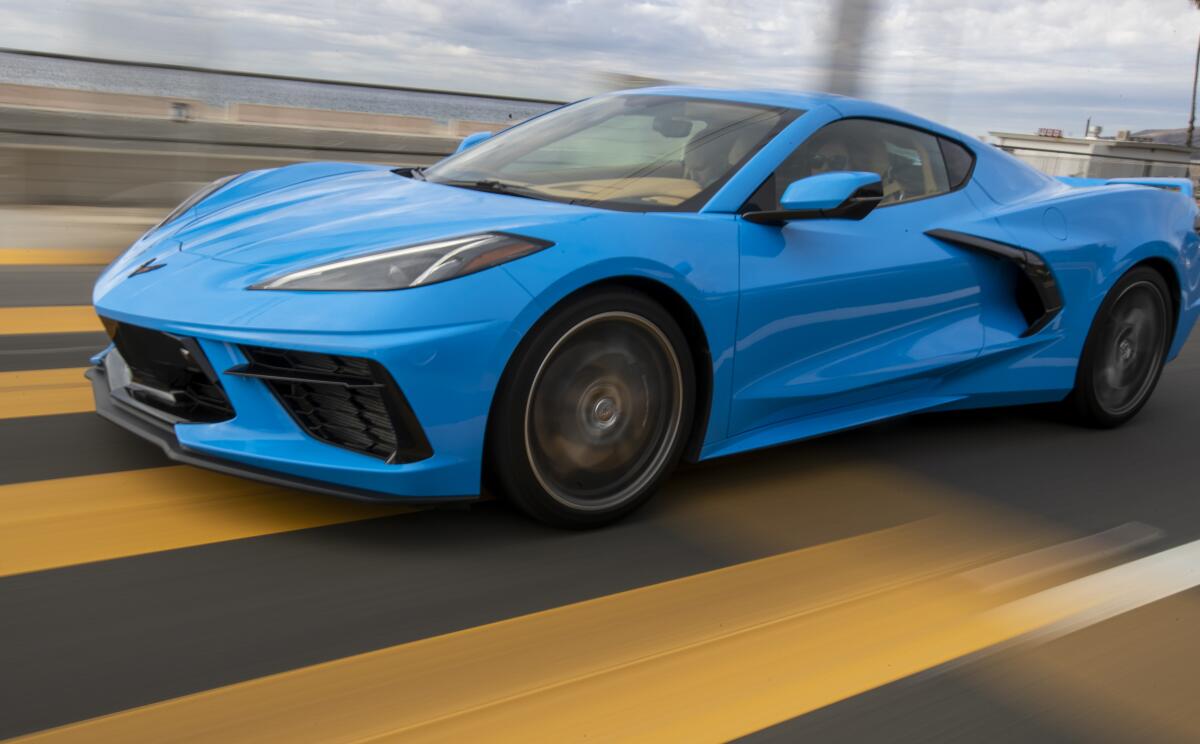
“Wow — thank you so much, ma’am!” gushes a young parking attendant at the Jonathan Club in Santa Monica. “It made my day to see this car in person!”
That’s the contagious effect the all-new 2020 Corvette Stingray has on just about everyone. A toddler in a stroller pointed and squealed as I rolled by. A well-dressed businessman was studying the car with appreciation when I emerged from a store. “I’ve never been a Corvette guy, but I can actually see myself owning one of these,” he told me before jumping into his Audi R8.
Of course, $300,000-plus Lamborghinis and McLarens garner longing looks, but they don’t provoke the ear-to-ear grins that Chevy’s latest does. I have rarely seen a vehicle elicit so much joy, so consistently, as I did in the two days I had the eye-popping “Rapid Blue” version GM lent me for testing.
Chevy gave the world its first peek of the C8 (its internal name) last July, at an unveiling in a hangar in Tustin to a standing-room-only crowd of media, collectors and influencers. Chevy chose SoCal for the launch because it’s the most important market for the car — which is the first in the model’s 67-year history in which the engine sits behind, not in front of, the driver. At the event, journalists commented to me that it looked like a Ferrari, to which I replied, “Is looking like a Ferrari a bad thing?!”
Last month, I got the call: It was finally time to test-drive a pre-production version. When I slid behind the steering wheel, I entered a whole other world of aromatic leather, slick driver-centric controls and intuitive next-gen tech. I pushed the start button and the 6.2-liter V8’s 495 horses raucously screamed to life over my shoulder.
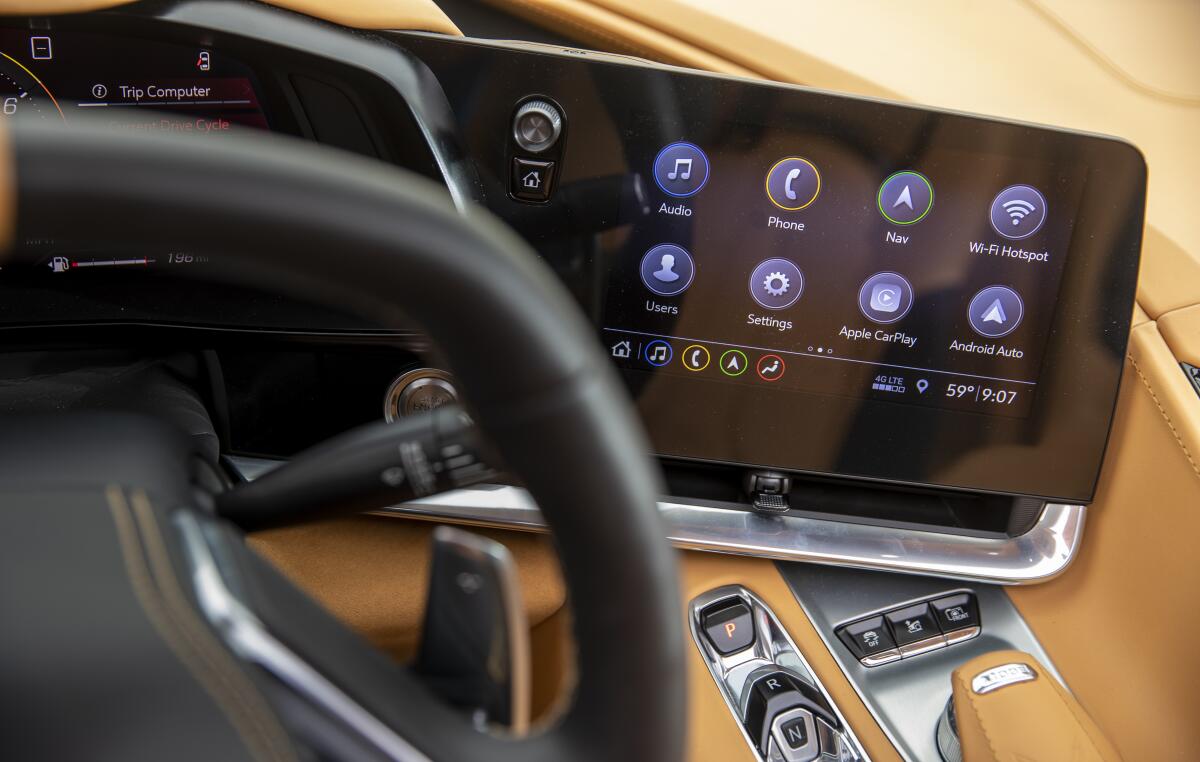
I headed to test-drive heaven — California 1. Almost immediately I was laughing at all the G-forces I could easily conjure with the steering wheel and my right foot. I played with the paddle shifters like a pinball machine (in automatic mode, the eight-speed, dual-clutch transmission is far faster than me—or you—but where’s the fun in that?).
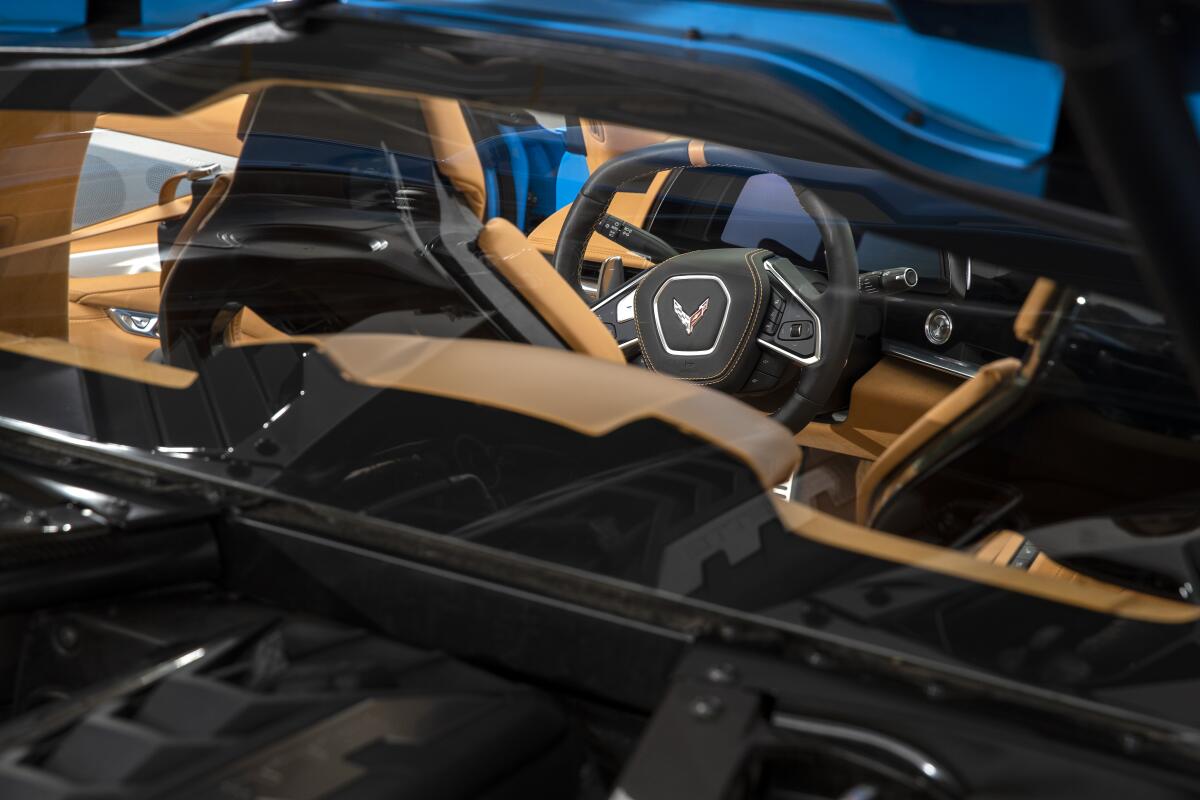
From Malibu’s twistiest canyons to heavy 101 traffic, the Stingray ticked all the boxes. Cornering: tenacious grip without body roll. Steering: light and responsive. Brakes: grabbier than a pickpocket. Off-the-line acceleration: near-psychedelic pull with a dash of wheelspin, even with traction control on. Acceleration at speed: Just about terrifying, if it didn’t feel so darn capable and well-sorted.
I am not gushing. I’m merely reporting the delicious facts.
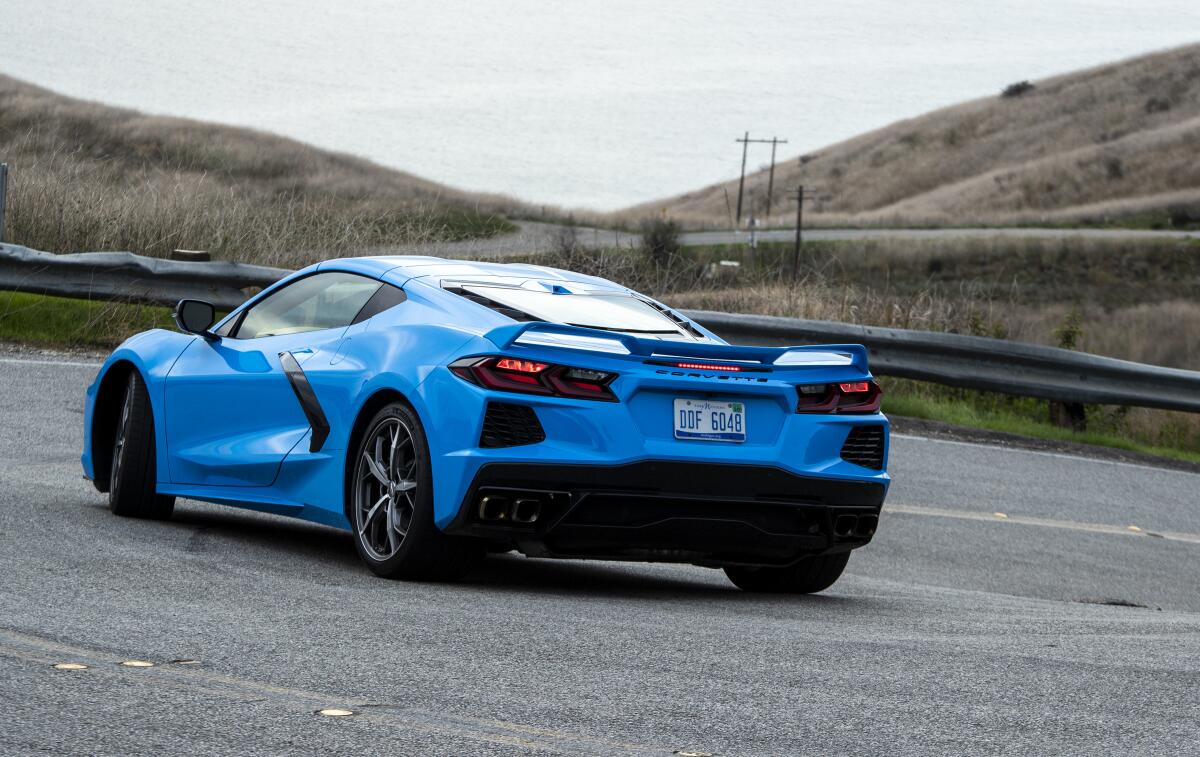
I am fortunate to have driven some of the best cars on the planet. So, when I say the new Vette exceeded my expectations, consider that a sizable understatement. And now perhaps the best news of all: The Corvette’s base price is $59,995. If you wanted to buy a midengine sports car with this level of capability from a European competitor, you’d have to spend five times as much, minimum.
GM has been producing competent Corvettes since the 1950s — two-seaters long on under-the-hood oomph but short on the kind of snob appeal that Aston Martins, Porsches and the like command. For all the performance prowess over time, there has always been some defensiveness on the part of Vette owners, who often cite one of the model’s best stats — its dollar-to-horsepower ratio. Those numbers are indeed impressive, but sports cars are about sex appeal; not every buyer sees the desirability of a lower sticker price over, say, Italian sheet metal.
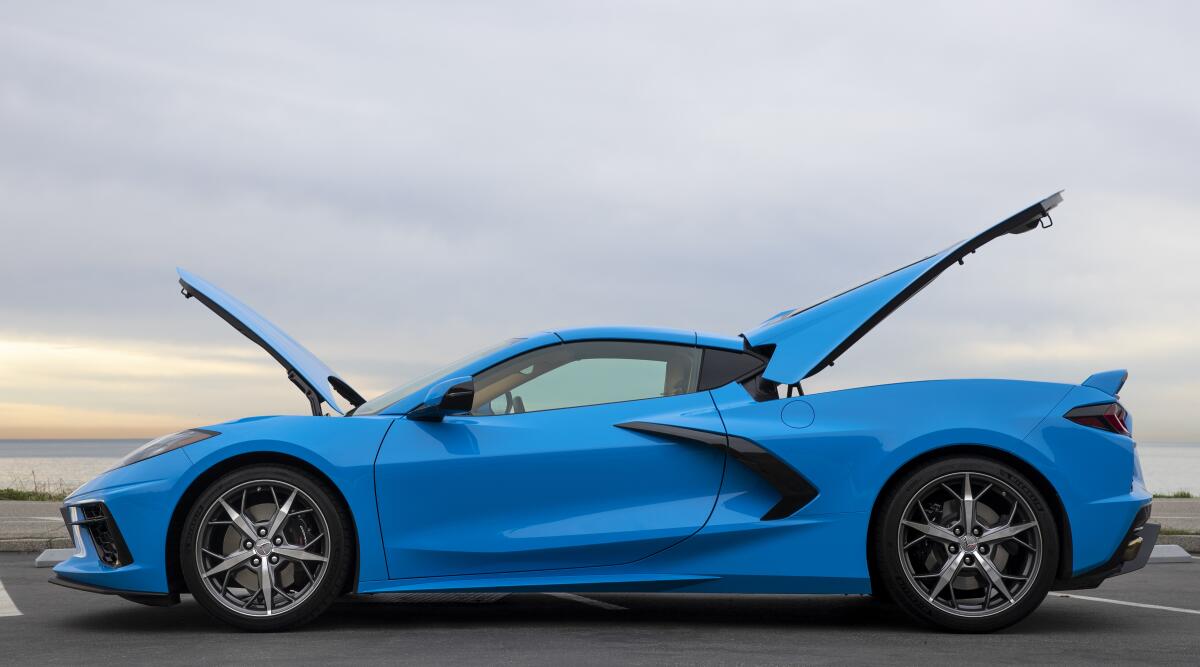
Ironically, Corvette’s spiritual father and first chief engineer, Zora Arkus-Duntov, was himself European — Belgian-born and a successful endurance sports car racer. Duntov joined GM in 1953 after seeing the first Corvette concept earlier that year in New York City (constructed, under the skin, largely out of GM truck parts, including Chevy’s “Blue Flame” six-cylinder engine).
From the beginning, Duntov dreamed of a midengine version of the Corvette, where the engine’s weight would help to balance the car’s handling and allow for a clear view over a short hood. He constantly lobbied GM’s top brass to bring such a forward-leaning configuration to market.
But the costs and engineering required to shoehorn a powerful V8 engine into a small space without the benefit of a long hood were onerous. So were other technical challenges — cramped passenger space, little cargo room and no place to tuck a convertible roof, to name a few. Eventually, Duntov and his successors built several midengine concepts but never a production version.
Fast-forward to today. According to Tadge Juechter, Corvette’s chief engineer, his team had finally reached the limit of how much performance they could squeeze out of the Corvette’s front-engine architecture. Also, it was clear the car’s loyal buyers were aging. Those factors, along with huge strides in areas like materials science and production capabilities, gave Juechter and his team the moment they had been waiting for.
But would the car’s traditional owners feel abandoned? “On the marketing side, this was a huge endeavor. We did a heck of a lot of research,” says Steve Majoros, director of Chevrolet cars and crossovers marketing. “Could we retain loyalists and also attract new buyers who appreciate the configuration but who don’t have the best perception of the Corvette brand?”
Apparently, yes. “Die-hard Corvette fans didn’t believe that Chevy would really do it, but now that they’ve seen the car, no one is complaining,” says Mike Vietro, the founder of Corvette Mike, an Anaheim-based specialty sales, service and restoration shop that has been around for 38 years.
Think about it: a $60,000 midengine V8, capable of a sub-three-second zero-to-60 time, with the looks of a European exotic and the reliability and affordability of an American-made car. Against the odds, Chevy has managed to achieve the best of both worlds.
“The C8 demonstrates GM’s technical capability to run with the big boys in performance but at Chevy prices — one of the brand’s key philosophies,” says Don Runkle, former chief engineer for Chevrolet. “Another is a focus on racing. The new Vette epitomizes both.”
To that point, the C8’s track version, the C8.R, will make its endurance racing debut at the Rolex 24 at Daytona on Jan. 26. “With this new Corvette, there’s a direct linkage between the production-car and the racing programs,” says Majoros. “Working with the racing side is a great way to test new technologies that may find their way into production, and it’s also an internal training ground for engineering talent.”
From the epic expense of motorsports to the relatively low-volume nature of a sports car, it’s a small miracle, really, that the Corvette has survived at all, even putting aside where its pumping heart resides. Given economic downturns, gas price fluctuations, priority on new and greener powertrains, and the killing off of entire GM brands such as Pontiac, Saturn and Oldsmobile, the car‘s endurance is testament indeed to its accomplishments and fan base.
So thank you, Chevy, for finally doing what Duntov envisioned and for setting a new high-water mark for an irresistible, ultra-high-performance car that is also financially approachable as well as user-friendly. If that doesn’t have the Corvette’s far pricier competitors quaking, I’ll bet the sales numbers will. According to Chevy, already 45,000 consumers have preordered a car online; deliveries begin in February.
2020 Chevrolet Stingray Coupe
Price: $59,995; $83,825 as tested
Engine: 6.2-liter V8
Horsepower: 490; 495 as tested with optional Z51 performance package
Torque: 465 lb.-ft. - 470 lb.-ft. as tested
0 to 60: 3 seconds; 2.8 seconds as tested
More to Read
Sign up for The Wild
We’ll help you find the best places to hike, bike and run, as well as the perfect silent spots for meditation and yoga.
You may occasionally receive promotional content from the Los Angeles Times.








